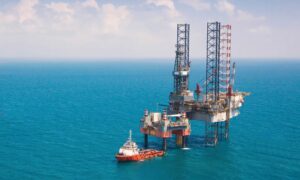
Dredging is a vital process in maintaining navigable waterways, constructing offshore structures, and extracting valuable resources from the seabed. Industrial hose is indispensable for transporting abrasive slurry mixtures, ensuring the success and efficiency of dredging projects.
Get the right dredging hoses you need, quickly and efficiently. Contact our expert team at J.W. Roberts for all your industrial hose requirements.
What Makes Dredging Hoses Unique?
Dredging hoses are no ordinary hoses. They are specifically engineered to withstand the harsh conditions of offshore environments and the abrasive nature of slurry. These hoses must handle a variety of materials, including sand, gravel, silt, clay, and even rocks. They must also endure constant exposure to saltwater, fluctuating temperatures, and high pressures.
To meet these challenges, dredging hoses are typically constructed with multiple layers of reinforcement. The inner layer is usually made of abrasion-resistant rubber or polyurethane, while the outer layers provide strength and protection against external damage. Some hoses are also equipped with steel wire reinforcement to further enhance their durability.
Types of Dredging Hoses
There are several types of dredging hoses, each designed for specific applications:
- Suction Hoses: These hoses are used to suck up slurry from the seabed. They are typically large in diameter and have a thick, abrasion-resistant lining.
- Discharge Hoses: These hoses are used to transport slurry away from the dredging vessel. They are usually smaller in diameter than suction hoses and may be reinforced with steel wire.
- Floating Hoses: These hoses are designed to float on the water’s surface, making them ideal for use in shallow waters.
- Submersible Hoses: These hoses are designed to be submerged in water, making them suitable for deep-water dredging operations.
Selecting the Right Industrial Hose
Choosing the right dredging hose is crucial for the success of any dredging project. Factors to consider include:
- Slurry Composition: The type of material being dredged will dictate the required abrasion resistance and chemical compatibility of the hose.
- Operating Pressure: The pressure rating of the hose must be sufficient to handle the pumping pressure of the dredging system.
- Temperature: The hose must be able to withstand the temperature of the slurry being dredged.
- Flexibility: The hose must be flexible enough to be easily maneuvered and deployed.
- Environmental Conditions: The hose must be able to withstand the harsh conditions of the offshore environment.
Industrial Hose Maintenance and Care
Proper maintenance and care are essential for maximizing the lifespan of dredging hoses. Regular inspections should be conducted to check for wear and tear, leaks, and other damage. Hoses should also be cleaned regularly to prevent the buildup of sediment and other debris.
Ensure Efficiency on Your Offshore Rig
Industrial hoses are the unsung heroes of offshore dredging operations. They play a vital role in transporting abrasive slurry mixtures, ensuring the success and efficiency of dredging projects. By selecting the right hose and providing proper maintenance, operators can ensure that their dredging operations run smoothly and efficiently. Contact our team at JW Roberts to get more insight about our different industrial hoses for your offshore operations!
